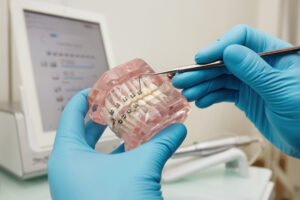
How Braces Treatment Work: A Full Guide for Teens, and Adults
Braces are more than just a rite of passage for teenagers. Orthodontic treatment plays a critical role in achieving healthy bites and confident smiles—for patients

Braces are more than just a rite of passage for teenagers. Orthodontic treatment plays a critical role in achieving healthy bites and confident smiles—for patients

Can children get braces with baby teeth? Yes, they can — and in some cases, they should. Orthodontic treatment is not just for teens and

If you’ve been dreaming of a straighter smile without the noticeable look of traditional metal braces, ceramic braces in Boca Raton may be the perfect

Oral care with braces: Learn how to keep your teeth clean and healthy while wearing metal or ceramic braces. Orthodontic treatment is a major step

Think braces are just for teenagers? Think again. Orthodontics for adults is more common than ever, as more people are choosing to start treatment to

When it comes to straightening teeth, metal braces are no longer the only option. Invisalign Clear Aligners for Adults have become a popular alternative and

©Copyright Zipper Orthodontics 2024 – Braces & Invisalign in Boynton Beach and Boca Raton, FL
Looking for an orthodontist near me in Boynton Beach and Boca Raton, FL? Orthodontist Dr. Brandon Zipper at Zipper Orthodontics specializes in state of the art braces, metal braces, clear braces, ceramic braces, sleep apnea, itero digital impressions, and Invisalign. We also offer early orthodontic treatment for children, and full orthodontic treatment for teens, and adult orthodontics. When considering your investment which includes the cost of braces, the cost of Invisalign, and the time it takes to create your new smile, you can’t put a price tag on a life-changing appearance which improves your long term dental health.
Visit our two convenient locations today in Boynton Beach and Boca Raton, FL. You will see for yourself orthodontist Dr. Zipper and his team offer effective and affordable braces serving Lake Worth 33460 and Delray Beach 33444, FL.